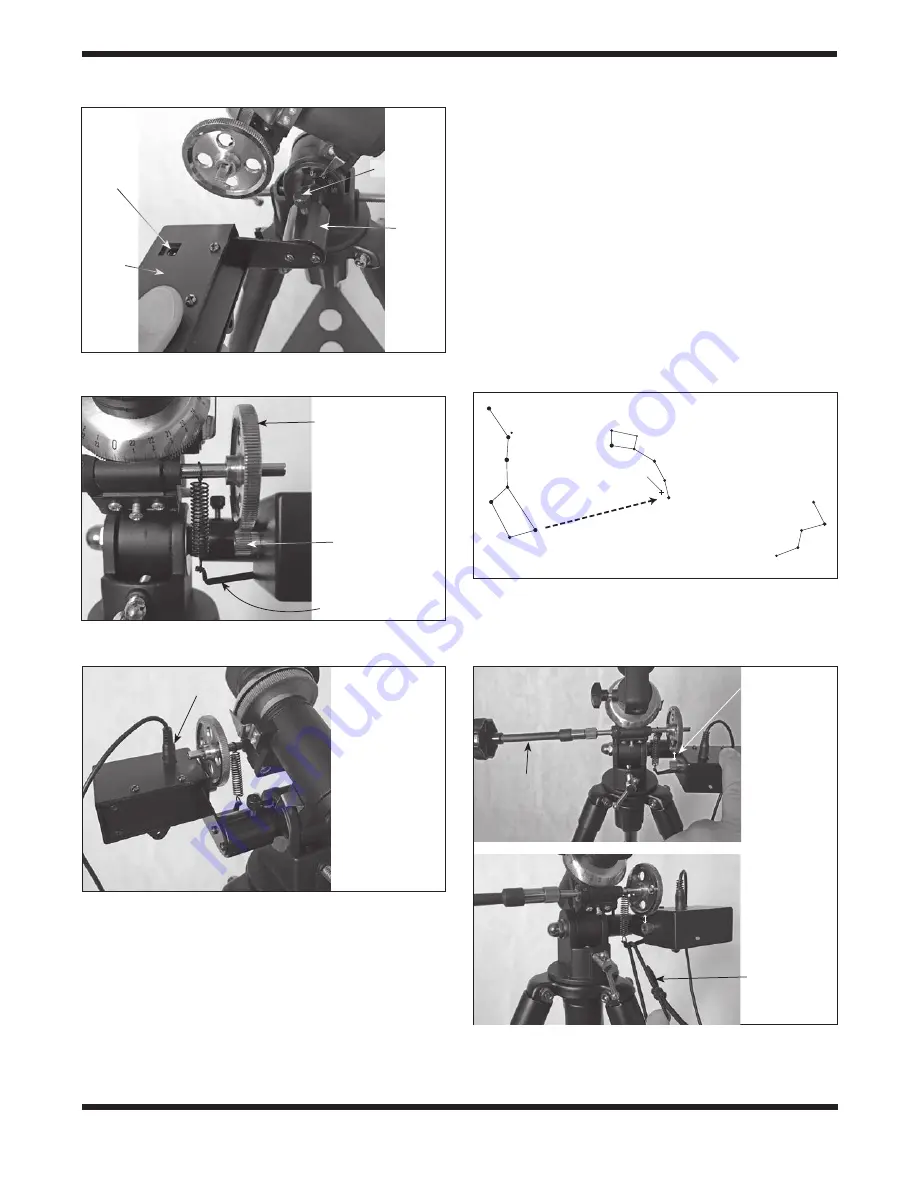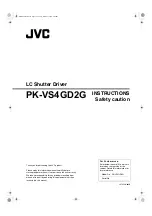
3
Figure 7.
Install the motor by slipping the coupler over the
anchor post.
Figure 8.
Attach the free end of the spring to the clutch tab of
the motor.
Figure 9.
Plug
the cable from the
battery holder into
the jack on the
motor housing.
8 of the assembly procedure (
Figure 11B). You do not need to
turn the motor drive off when disengaging it to use the slow-
motion cable. Then with the other hand turn the R.A. slow-
motion cable to slew the mount. Do not attempt to turn the
R.A, slow-motion cable when the motor drive is engaged or
you could damage the motor! When finished slewing with the
slow-motion cable, gently release the motor drive or clutch
cable so the gears re-engage.
Normal Operation of the
Motor Drive
You may notice that the motor drive speed varies over a peri-
od of time. This is normal for this type of drive! Due to slight
irregularities in the gears, a controller circuit inside the motor
housing calculates how fast or slow the motor needs to run
at any particular time to compensate for the forces that build
up or dissipate as the gears turn against each other. Those
calculations result in minor moment-to-moment variations
in the motor speed in order to maintain an average speed
equivalent to the sidereal rate, the Earth’s rate of rotation.
Since absolutely constant speed is not required for this level
of mount, as would be needed to do deep-sky astrophotog-
raphy, for in-stance, the motor drive is well suited to casual
observing and will keep target objects in the telescope’s field
of view for a prolonged period of time.
Gear wheel
Spur gear
Power
plug
Clutch tab
Thumbscrew
Coupler
Power
jack
Motor
housing
Figure 11
To move the right ascension axis with the slow-motion
cable, disengage the motor drive by
A)
pressing down on the motor
housing using your hand, or
B)
pulling down on the clutch cord.
R.A. slow
motion cable
Gears are
disengaged
Clutch cord
A
B
Big Dipper
(in Ursa Major)
Little Dipper
(in Ursa Minor)
Cassiopeia
N.C.P.
Pointer
Stars
Polaris
Figure 20.
To find Polaris in the night sky, look north and find the
Big Dipper. Extend an imaginary line from the two "Pointer Stars"
in the bowl of the Big Dipper. Go about five times the distance
between those stars and you'll reach Polaris, which lies within 1° of
the north celestial pole (NCP).






















